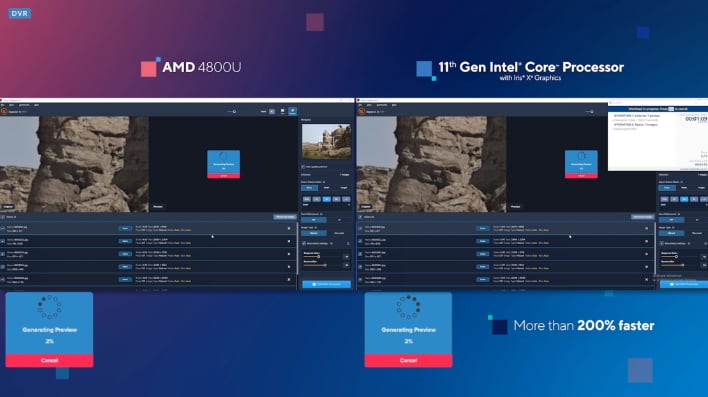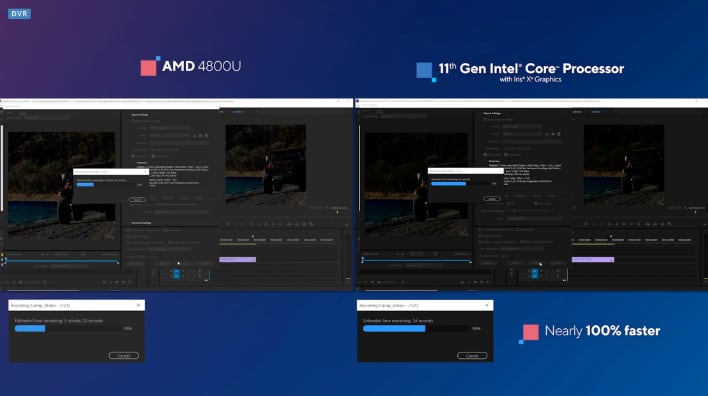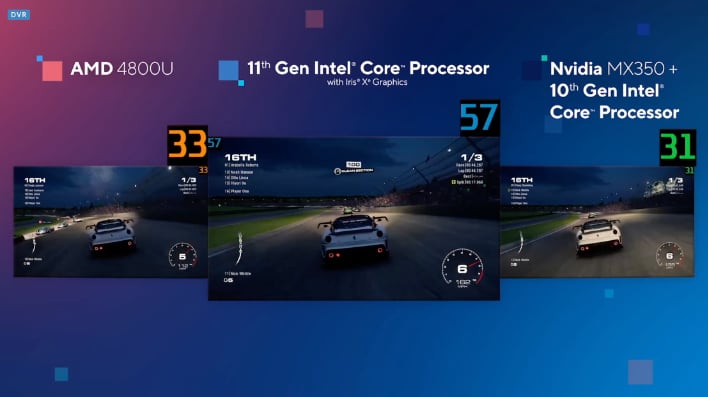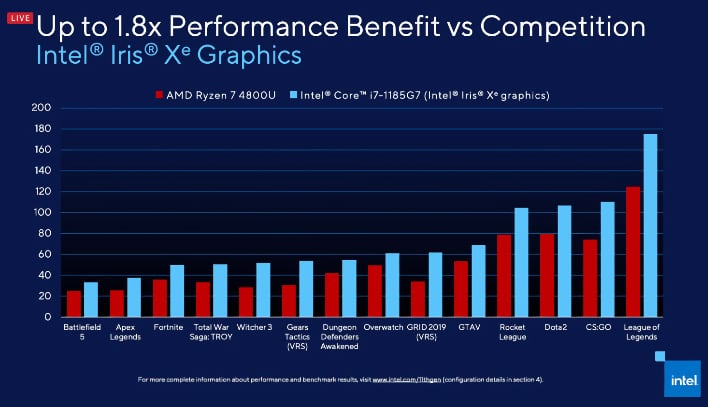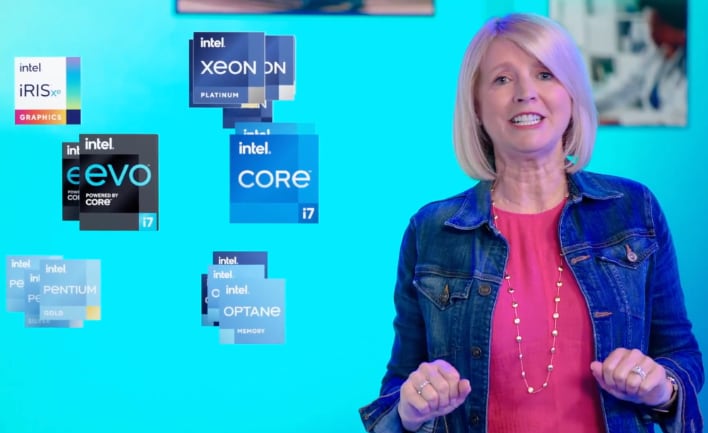Intel Unveils Entire Tiger Lake 11th Gen Family, Smokes Ryzen 4000 In Gaming And Creation
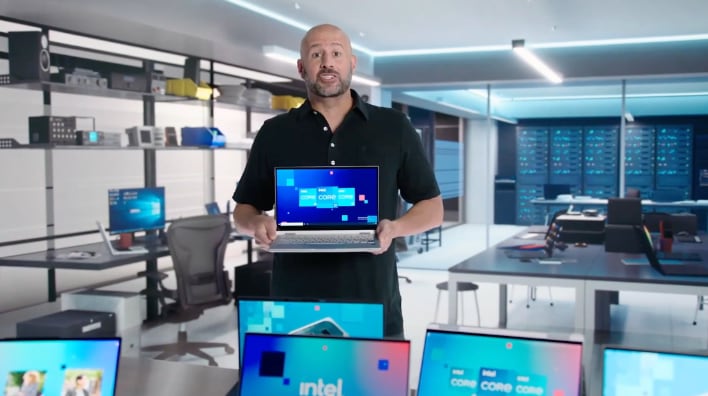
Straight out of the gate during Intel's virtual launch event, Intel came out guns blazing for AMD. AMD has gained market share and clout with its 7nm Zen 2-based Ryzen 4000 mobile processors, which have been very competitive with Intel’s 10th generation processors. However, Intel is looking to slam the door on AMD with Tiger Lake. Or as Intel put it, it is looking to take on “all the imitators" out there.
Intel showed demos where Tiger Lake 11th gen Core processor is up to 2.7x faster than a Ryzen 7 4800U in content creation tasks (i.e. photo and video editing), and roughly twice as fast in gaming performance. The company is also promising 20 percent faster overall performance in office productivity tasks. When it comes to gaming, Intel is banking on its all-new 12th generation Iris Xe graphics architecture, which it says can outperform 90 percent of the discrete GPU solutions offered in the thin and light laptop segment. In its most potent form, Iris Xe has a total of 96 execution units and 16MB of L3 cache.
The list of game titles Intel put on display versus AMD Ryzen 4000 was significant, in a separate press deep dive presentation given after the main event stream. And it looks like a clean sweep, according to Intel's numbers. Tiger Lake also brings hardware acceleration support for the AV1 CODEC, Thunderbolt 4 and PCIe 4.0 support. It should be noted that both Thunderbolt 4 and PCIe 4.0 are supported natively on Tiger Lake platforms. AMD doesn’t support Thunderbolt natively at all. Likewise, AMD supports PCIe 4.0 on its desktop chipsets, but has left that support out for Ryzen 4000 mobile processors for power efficiency reasons. Intel apparently doesn’t have those same concerns, and will be fully supporting PCIe 4.0 NVMe SSDs for laptops (although it's up to OEMs to go with PCIe 4.0 SSDs).
Tiger Lake also delivers the second generation of Intel’s Project Athena initiative, which is now called Intel Evo. Evo certified laptops can last at least 9 hours per charge, support fast charging to give four of runtime in just 30 minutes, and wake from sleep in less than a second. In all there, are 25 different criteria that must be met to get qualify for the Evo branding.
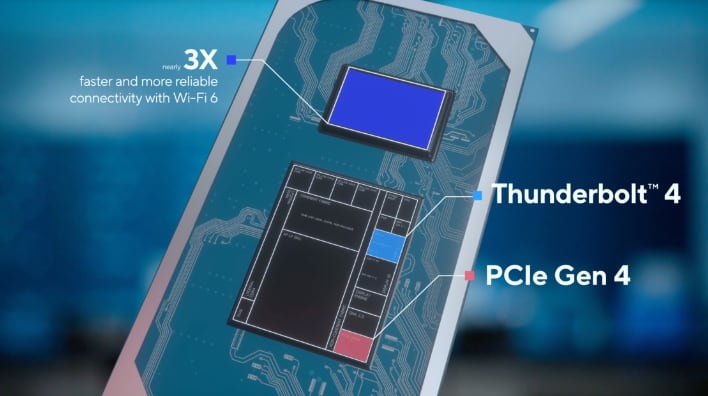
Below, you can see that Intel has a total of 9 SKUs on deck for OEMs to use in their new thin and light notebooks. Interestingly enough, the Core i3 versions of Tiger Lake are using Intel’s existing UHD Graphics instead of Iris Xe. As we’ve previously seen, the flagship of the Tiger Lake family (with a configurable TDP of between 12W to 28W) is the Core i7-1185G7. This processor supports up to LPDDR4x-4266 memory and features base/max turbo clocks of 3GHz and 4.8GHz respectively. Maximum all-core overclock is 4.3GHz, while the Iris Xe graphics maxes out at 1.35GHz.
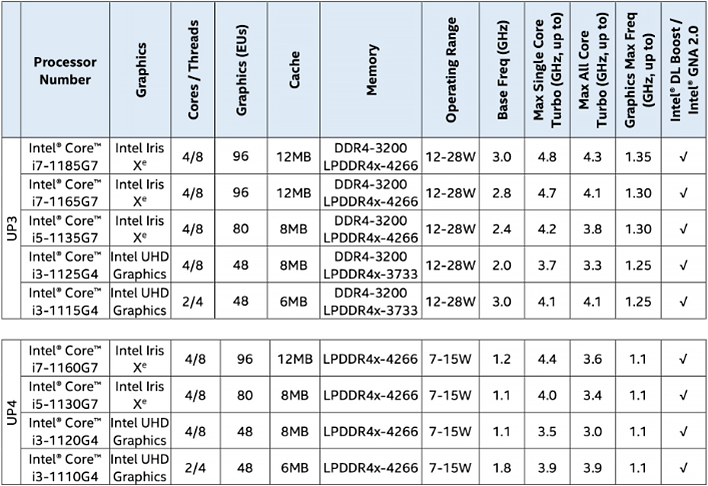
“11th Gen Intel Core processors with Intel Iris Xe graphics are a major leap forward in real- world processor performance and are the best laptop processors we have built,” said Gregory Bryant, Executive VP and GM for Intel’s Client Computing Group. “From productivity and content creation to entertainment and gaming, when you pick a system powered by 11th Gen Intel Core – especially one of our new Intel Evo co-engineered and verified designs – you know you are getting the best laptop experience possible.”
Intel is making many bold claims about Tiger Lake and how it will compete with AMD in content creation, productivity, and gaming applications. Intel’s curated benchmarks make Tiger Lake look impressive – and we have no doubt that it will be – but we’ll temper excitement until we can get machines into our lab to test first-hand. At the very least, AMD should at least be looking over its shoulder as Intel has come ready to do battle in the mobile space.

